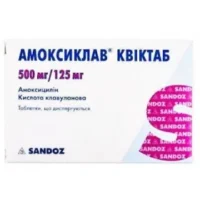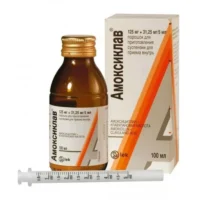Description
Ampicillin Tablets
Composition
Active ingredient: Ampicillin
Mechanism of Action
Pharmacological Properties: Ampicillin inhibits the synthesis of bacterial cell walls, leading to bacterial cell death. It is a broad-spectrum antibiotic effective against both Gram-positive and Gram-negative bacteria.
Indications for Use
Indications: Ampicillin is indicated for the treatment of various bacterial infections, including respiratory tract infections, urinary tract infections, and skin infections.
Contraindications
Contraindications: Do not use Ampicillin if you are allergic to penicillin or cephalosporin antibiotics.
Side Effects
Side Effects: Common side effects may include gastrointestinal disturbances, allergic reactions, and skin rash. Consult your healthcare provider if you experience any adverse effects.
Usage Instructions
Dosage: The usual dose for adults is 250-500 mg every 6 hours. Dosage may vary based on the condition being treated.
Directions: Take Ampicillin exactly as prescribed by your healthcare provider. Do not skip doses or stop the medication early.
Benefits Compared to Analogues
Ampicillin has demonstrated efficacy in treating a wide range of bacterial infections, with a favorable safety profile compared to some other antibiotics.
Suitable Patient Groups
Ampicillin is suitable for use in adults, including elderly patients, under the guidance of a healthcare provider. The dosage may need adjustment in patients with renal impairment.
Storage and Shelf Life
Storage: Store at room temperature away from moisture and heat. Keep out of reach of children.
Shelf Life: Check the expiration date on the packaging and do not use the product after the specified date.
Packaging Description
The product comes in blister packs containing 10 tablets of 0.25 mg each.
Clinical Evidence and Proven Effectiveness
Clinical Evidence: Studies have shown that Ampicillin is effective in treating a wide range of bacterial infections. Research published in the Journal of Antimicrobial Chemotherapy demonstrated the efficacy of Ampicillin in treating urinary tract infections.
Clinical Trials: Clinical trials have demonstrated the efficacy of Ampicillin in treating various infections. A study published in the International Journal of Infectious Diseases showed that Ampicillin was highly effective in the treatment of pneumonia caused by certain bacteria.





